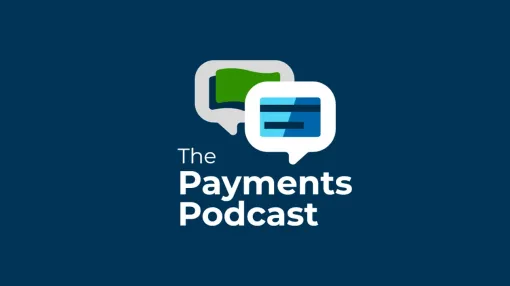The world of AP automation promises rebates, fewer paper checks, efficient payment and invoice processes and a payment mix that stretches from virtual cards to ACH. Automating the entire invoice-to-pay process can save money, time and stress. For companies that have already adopted it, there’s a need for more information to take the next steps after the “go live” date. For companies still using manual AP processes, there’s a wealth of information on the basics right up to how to pick a partner. What follows, in alphabetical order, are ten resources to help start you on your automation journey or provide advice on how to continue it.
Accounts Payable Association (UK): Truly a professional community site, the AP Association ranges from its Wall of Appreciation to best practices to celebrating AP Week in the UK (May 19, 2023). The site also features awards, training, and certifications for AP practitioners. Key quote: “A top outsourcing firm will do accounts payable transactions for a living. They can do more than just perform the tasks and provide the talent. They are also experts at optimizing processes to ensure the highest levels of efficiency and productivity. They are the experts in implementing digital technology, removing the risks from these initiatives. If you have outsourced your AP activities to a professional consultancy, they should guarantee the outcomes of delivering your expected cost savings and ROI.”
AP Now: Owned and operated by Mary Schaeffer (who admits to being “obsessed” about AP), AP Now features podcasts, newsletters and other resources that dive deep into the AP automation playbook. And while AP Now features content on its site, you’ll also want to follow Schaeffer’s LinkedIn page. Key quote from her profile: “Is it important to your organization that it avoids duplicate payments, fraud and incomplete regulatory compliance? Little mistakes in accounts payable can lead to significant financial losses. In this piece, we’ll review some basic ways to avoid errors and best practices that are not always followed. Stick around until the end when we discuss two issues that most don’t consider when thinking about mistakes that get made in accounts payable, mistakes that often lead to duplicate payments (which are rarely returned) and worse.”
Amex: Amex’s website has a wealth of information on many topics in the payments industry with a respectful amount of objectivity. “What Is Accounts Payable Automation and How Does it Work?” serves as a good primer from companies still looking to find an AP automation partner. Key quote: “The key to choosing the right solution is to review your existing processes, build a solid plan and business case for using AP automation software, and secure buy-in from the necessary stakeholders to ensure a smooth implementation. With clear requirements and the right people on board, you can then explore solutions from different vendors and choose one that meets your needs for performance, scope, and cost. It’s a good idea to test your AP automation solution before going live to iron out any bugs and train employees to take full advantage of the new software. After all, the success of any new technology comes from the skills and receptiveness of the people who use it.”
The Business Payments Coalition: The BPC is an advocacy group of companies working to promote greater adoption of electronic business-to-business (B2B) payments, remittance data, and invoices. On a more specific level it aims to make B2B electronic payments more efficient across both the procure-to-pay and order-to-cash cycles. Most recently, it teamed up with Federal Reserve Financial Services to advocate for improving the efficiency of how supporting information for business-to-business (B2B) payments is delivered and processed. Key quote: “One of the key steps to achieving ubiquitous B2B electronic payments in the United States is establishing a standard way to send electronic invoices (e-invoices) and remittance (e-remittance) data between businesses. An exchange framework is an electronic delivery network based on a set of technical standards and policies to allow businesses to securely share electronic supply chain documents with one another. An exchange framework allows for improved payments efficiency by transforming B2B invoicing and remittance information processes from a fragmented, manual, multi-step process to an automated one that, ideally, achieves straight-through processing.”
CFO.com: If the payments technology space had a Bible, this would be it. CFO.com covers all the things any finance professional would need, from lifestyle pieces like the 6 am CFO to down-in-the-weeds tax information. It also does an excellent job covering AP automation mixing data with op-eds and straight news. Exemplary quote: “As finance teams enter the third quarter of an unpredictable year, the balance between preserving longevity and meeting growth goals has been challenging. With thoughts about the impacts of technology blending with a continued desire for work-life balance on the minds of many finance teams, the desire to succeed at an organizational level, and the necessary workloads in the second half, companies will require motivated employees who are empowered with the proper tools.”
The CPA Journal: At its core, AP Automation is rooted in accounting, although its benefits go far beyond that department. Billing itself as “the voice of the profession”, the Journal covers conferences, hard news, executive profiles and trend pieces that capture AP automation. Key quote: “Many routine accounting processes will be handled by machine learning algorithms in the near future. Accounting processes such as expense reports, accounts payable, and risk assessment may be easily automated using machine learning. The jobs requiring the processing of documents have already started disappearing with the advent of document scanners, optical character recognition, and software to match source documents. As an example, machine learning algorithms can receive an invoice, match it to a purchase order, determine the expense account to charge, and place it in a pool of payments to release; a human worker can review the documents and release them for payment.”
Deloitte Working Capital Series: The consulting giant unpacks working capital strategies somewhat objectively and assigns one of them specifically to accounts payable. The AP installment is loaded with practices like this: “Centralizing accounts payable processing and reporting across the enterprise through a shared service environment to ensure all staff members adhere to common practices and standards and measure their performance against established business metrics. This has the added advantage of enabling you to accomplish more tasks in a faster timeframe and with fewer resources, ultimately reducing enterprise costs.”
Institute of Finance and Management: Perhaps all you need to know about this advocacy group is that the home page asks, “What topic would you like to explore today?” Your choices? Accounts payable and accounts receivable. That’s how focused the IOFM is. It hosts town halls, webinars and trade shows, and the site is full of benchmarking reports, data dives and thought leadership pieces. Key quote: “Accounts payable also knows how many suppliers the company buys from. That's valuable information. That way, you can provide procurement with data that will enable them to make better purchasing decisions, to consolidate suppliers and negotiate better deals. You want to partner with them and provide consultation, giving them better insight. And your value begins to move up.”
Payables Place: As the content destination for analyst firm Ardent Partners, Payables Place has its expertise built in. Its analysts host webinars and write thought leadership pieces on all things payment automation, specifically focusing on AP. Key quote: “In today’s turbulent business and economic environment, chief financial officers face some of the most significant challenges in decades, particularly in accounts payable (AP). With the primary goals to maintain cash flow and strengthen supplier relationships, AP is a critical process for both financial and supply continuity. However, many CFOs remain plagued by manual processes that not only slow invoice processing but also lead to invoice data inaccuracies and potential overpayment. Such inefficiencies and errors leave the enterprise and CFO with a compromised balance sheet.”
The Payments Podcast: This series from Bottomline covers issues from AP automation to the future of B2B payments and everything in between. This episode covers the 2023 Business Payments Barometer findings around cash flow management, of which AP automation is a major part. Bottomline’s Gunita Bindra and Charles Bennett share their thoughts here on the findings and the expectations of financial decision-makers over the next couple of years. Key quote: “Don't just show me the data; forecast what it looks like in the future. Because despite greater use of cash forecasting tools, financial decision-makers continue to feel pessimistic about the accuracy of their forecasts, with half of GB businesses (54%) and (65%) of US businesses saying they are seldom accurate. In the US, small businesses (50%) are less likely than average to share this sentiment. No surprise then that a recent Visa Connect research project showed 49% of all SMBs investing in cost-saving technology.”
Strategic Finance: The media arm of The Institute of Management Accountants trends more heavily in the direction of thought leadership than other accounting publications. As its title suggests, it covers overall strategic issues skillfully such as AML, working capital and regulations. Key quote: “We’re increasingly focused on the demands of rapid digital transformation. As technology and data shifts reshape our businesses and lives, we need to examine our environmental and carbon footprints and actively support more sustainable and regenerative solutions. We also need to ensure equitable and just access to the solutions and opportunities we create and that none are intentionally created at the expense of others while also taking a much broader look at the well-being of all our stakeholders, now and into the future.”


